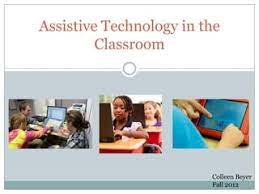Introduction
Today’s classrooms are becoming more inclusive and diverse, welcoming students with various learning needs and abilities. Assistive technology (AT) plays a crucial role in ensuring that every student has an equal opportunity for success. This article will explore the significance of assistive technology in the classroom, the different types of AT available, and how educators can effectively integrate these tools to promote learning and independence among students with disabilities.
The Importance of Assistive Technology in Education
Assistive technology is any tool or device that helps students with disabilities engage in learning, communication, and daily living tasks. AT devices can range from low-tech solutions like pencil grips and slant boards to high-tech options like specialized software and communication devices. Implementing assistive technology in the classroom allows students with disabilities to:
1. Access curriculum materials: AT can enable students with disabilities to participate in learning activities alongside their typically developing peers by providing alternative ways to access information or complete assignments.
2. Improve communication: Students who struggle with verbal communication can use AT devices like speech-generating tools to express themselves more effectively.
3. Enhance mobility: Mobility aids like wheelchairs or walkers can help students with physical disabilities navigate their environment independently.
4. Develop independence: AT can empower students to accomplish tasks without relying on constant support from educators or peers.
Types of Assistive Technology for Different Needs
There is a wide range of assistive technology options designed to cater to diverse needs in the classroom:
1. Learning and literacy support: Tools such as text-to-speech software, electronic spell checkers, and graphic organizers can benefit students with dyslexia, ADHD, or other learning challenges.
2. Vision support: Screen readers, magnification software, and tactile graphics support students who have visual impairments.
3. Hearing support: Hearing aids, FM systems, and closed-captioning services can assist students who are hard of hearing or have auditory processing disorders.
4. Communication support: Students with speech and language disorders may find success using Augmentative and Alternative Communication (AAC) devices like picture boards and speech-generating devices.
Integrating Assistive Technology into the Classroom
To effectively incorporate assistive technology into the learning environment, educators should:
1. Collaborate with a multidisciplinary team: Work closely with therapists, specialists, and special education teachers to identify the appropriate AT tools for individual students.
2. Provide training: Educators and students should receive training on how to use AT devices effectively to ensure optimal outcomes.
3. Adapt the curriculum: Modify lesson plans or assignments to accommodate the use of assistive technology, ensuring all students can participate fully in the learning process.
4. Foster a supportive classroom culture: Encourage peers to accept and respect the use of assistive technology by modeling positive attitudes and promoting an inclusive environment.
Conclusion
Assistive technology in the classroom has the potential to transform the educational landscape for students with disabilities. By providing access to curriculum materials, enhancing communication skills, and promoting independence, AT empowers all learners to reach their full potential. It is crucial for educators to embrace these tools, collaborate with experts in the field, and create inclusive learning environments where every student can thrive.





